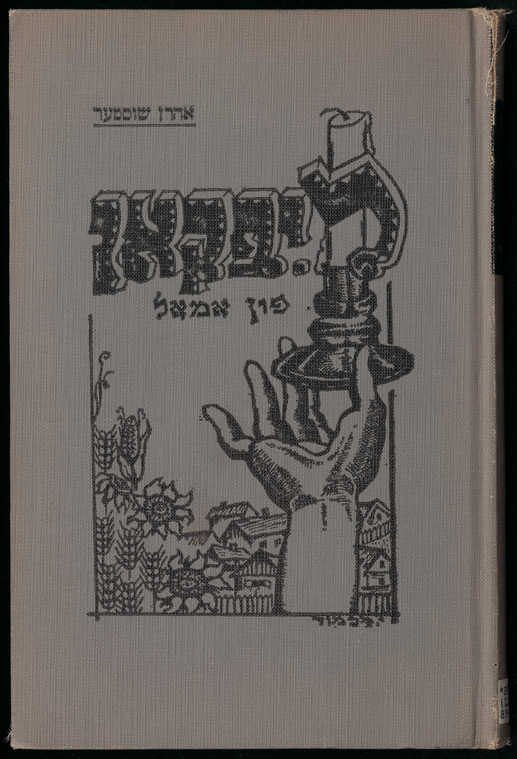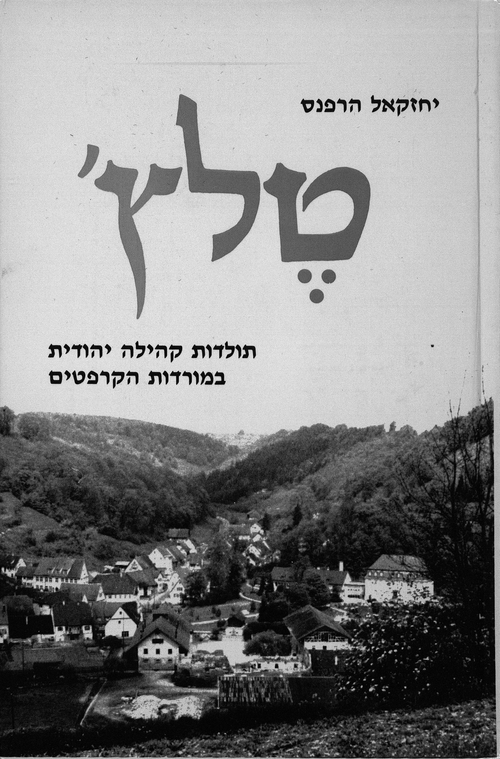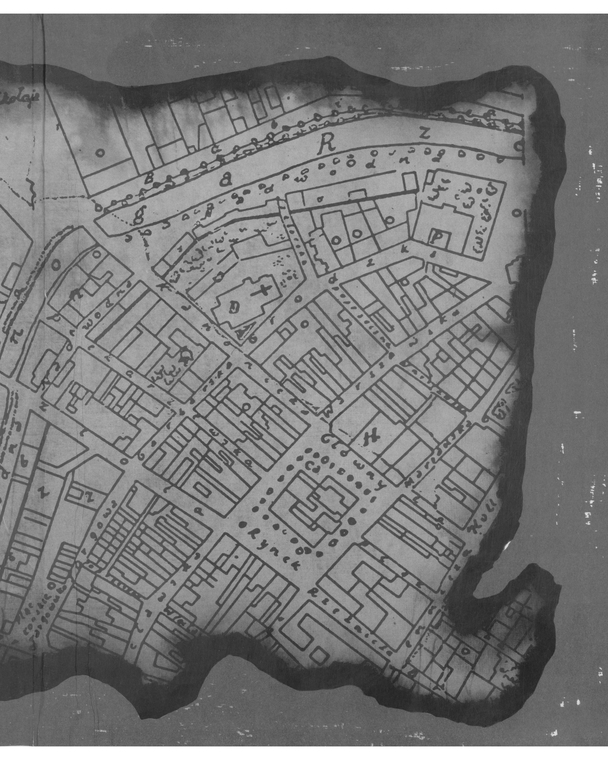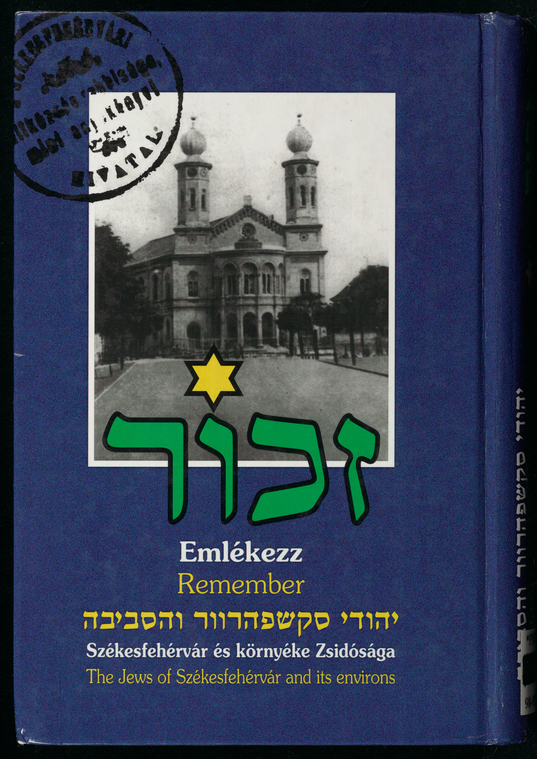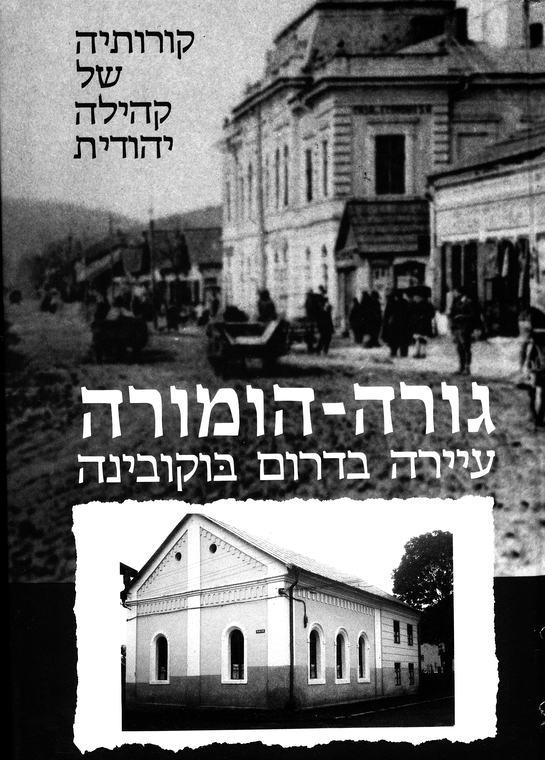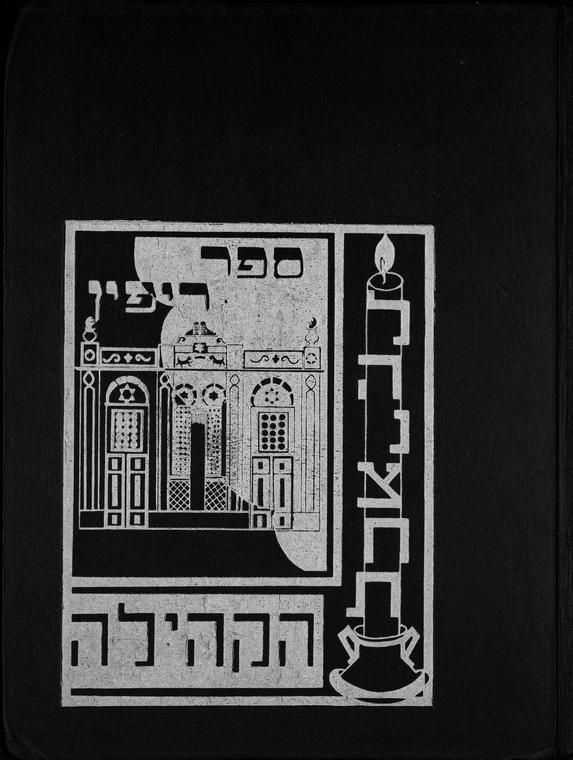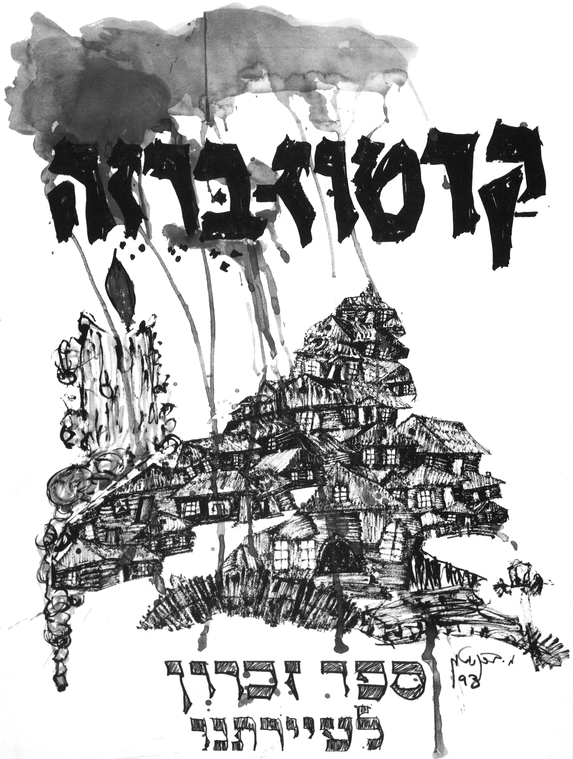Yizkor Books at The New York Public Library
The New York Public Library has 700 yizkor books (memorial books), the largest collection of its kind in North America, and one of the most heavily used. 85% of the Library's yizkor books are digitized and freely available online, thanks to the Library’s partnership with the Yiddish Book Center.
What is a yizkor book?
Yizkor means "memorial" in Hebrew, and yizkor books are an important primary source documenting the history of Jewish communities destroyed during the Holocaust. Often privately published and compiled through the collective efforts of former community residents, Yizkor books describe daily life through essays and photographs, and memorialize murdered residents.
Yizkor books generally focus on the history of the towns or cities, especially during the period between the First and Second World Wars. Most are in Hebrew and/or Yiddish, although more English translations are being published now, especially through JewishGen, in online and print format.
In addition to being a primary source, a particular yizkor book can sometimes provide the only substantial documentation of historical Jewish life in that community. As fewer and fewer survivors of the communities remain, yizkor books preserve their voices and memories through photographs, essays, maps, and narratives of life before and during World War II.
Ways to Access Yizkor Books
- Use the new LibGuide to search the yizkor book collection.
- Read yizkor books online in the NYPL Digital Collections
- Read and download PDFs from the Yiddish Book Center website
- Use yizkor books in print and microfilm in person at the Library.
Yizkor book reprints for most titles are available immediately in the reading room of the Dorot Jewish Division. No appointment is needed; however, a Library card is required (if you don't have one, apply here.)
If you have questions about the collection, please contact dorotjewish@nypl.org.
Why do researchers use yizkor books?
Genealogy research
Some researchers use yizkor books to search for family members who lived in specific towns and cities before and during the war. Many yizkor books include necrologies (lists of the dead) and, separately, lists of survivors and landsmanshaftn (hometown associations of immigrants).General history of a town or city
Yizkor books document the history of towns and cities in which the Jewish population played an important role. The Library receives inquiries from researchers in these towns and cities who wish to translate yizkor books into other languages, such as Polish, or use their contents for local exhibitions and educational programs.Documentation of the Holocaust
Researchers use yizkor books to document the Holocaust through necrologies (lists of the dead), testimonies of survivors, and legal documents, such as deportation orders. This information can be used for documentary and memorial purposes, and also to support survivors’ applications for reparations and reclaiming of stolen family property.General research on aspects of Jewish history and culture
Yizkor books are a treasure trove of historical information for researchers, covering many aspects of Jewish history and culture including folklore, politics, and culture, as well as educational, religious, and communal life.What’s unique about conducting research in yizkor books?
Names
Most towns and cities represented in yizkor books have more than one name, due to changing borders, political regimes, and various languages spoken in the region. Some yizkor books cover more than one town.Languages
Yizkor books reflect the historically multilingual aspect of Jewish life—most are in Hebrew and/or Yiddish, the languages spoken by residents in the communities they describe, and in the communities where they settled after World War II.Translation
Many researchers cannot read or speak the languages in yizkor books, which are increasingly being translated into English (often through JewishGen) and other languages. Researchers may request help from Library staff to search an index or table of contents.Searchability
Through the website GenealogyIndexer.org, users can search for words in about half of the digitized yizkor books (and in other resources) in the Latin, Cyrillic, and Hebrew alphabets. Visit the site for more information.Frequently Asked Questions
Where can I find the official current name and spelling of a particular town or city?
The official current name and spelling in the Latin alphabet of particular towns and cities, as standardized for usage by the United States Federal Government, is available via the GEOnet Names Server (GNS), developed and maintained by the National Geospatial-Intelligence Agency (NGA).
The gazetteer Where Once We Walked, available at the Library, provides name variations, and the longitude and latitude for towns and cities with historical Jewish populations. JewishGen also has a town finder database with information on 6,000 Jewish communities in Europe, North Africa, and the Middle East.
Is there is a yizkor book for my town?
JewishGen has a bibliographic database listing yizkor books in libraries around the world. If there is no yizkor book for your town, you can review other sources of information. Please contact us at dorotjewish@nypl.org for additional assistance.
My family left the old country in the late 19th or early 20th centuries. Can I find information about them in a yizkor book?
Because Yizkor books generally focus on the period between World War I and World War II, and on the second World War period, you might find information about relatives who were living in the town then.
Researching people who lived there before the First World War may be more difficult, unless they figured prominently in the history of the town: for example, rabbis, writers, artists, political figures, or other celebrities. If anything, you are more likely to find information on relatives that did not emigrate.
To search for records of relatives that emigrated, you may be more likely to find information using sources such as Ancestry and JewishGen. For more information, please see the blog post "Jewish Genealogy: A Quick Online Guide."
Where can I find information about people from a specific town and their fate during World War II?
Many yizkor books have necrologies (lists of the dead) and separately, lists of survivors. Yad Vashem maintains a searchable database of those who perished during the war, documented with testimony from witnesses. The United States Holocaust Memorial Museum provides research resources on determining the fate of individuals during the Holocaust.
The International Tracing Service also provides documentation, research, information, and commemoration for victims of Nazi persecution and their family members.
Still have questions? Contact us at dorotjewish@nypl.org.
Visit the yizkor book collection in person or online. Yizkor book reprints for most titles are available immediately in the reading room of the Dorot Jewish Division.
Read E-Books with SimplyE
 With your library card, it's easier than ever to choose from more than 300,000 e-books on SimplyE, The New York Public Library's free e-reader app. Gain access to digital resources for all ages, including e-books, audiobooks, databases, and more.
With your library card, it's easier than ever to choose from more than 300,000 e-books on SimplyE, The New York Public Library's free e-reader app. Gain access to digital resources for all ages, including e-books, audiobooks, databases, and more.
If you don’t have an NYPL library card, New York State residents can apply for a digital card online or through SimplyE (available on the App Store or Google Play).
Need more help? Read our guide to using SimplyE.
